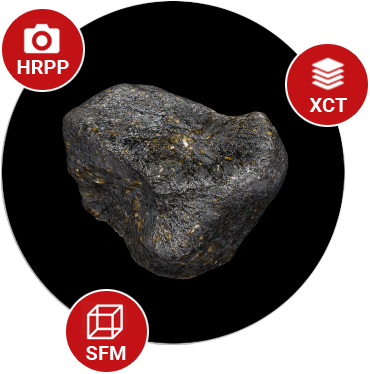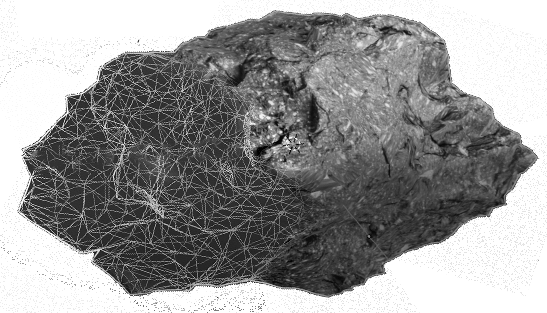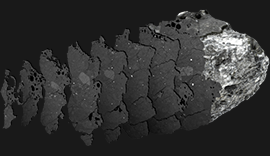Project Technology
Astromaterials 3D was created with three primary technologies: High-Resolution Precision Photography (HRPP), Micro X-Ray Computed Tomography (XCT) and Structure-From-Motion Photogrammetry (SFM). The team has designed and built custom hardware and developed novel methods to achieve research-grade interior and exterior 3D sample reconstruction that is viewable within a singular coordinate system.

Technology Details
Astromaterials 3D's methodology uses these primary technologies to produce the internal and external imagery and 3D mesh used to create these interactive models.

HRPP
High-Resolution Precision Photography
NASA's astromaterials are housed in a multi-clean room facility and must be kept in nitrogen cabinets during the photographic process, as required by curation protocols. Because of this, the HRPP method to capture the exterior of the rock was developed as a manual imaging process that captures 240 to 480 angles of each rock using a 60- or 100-megapixel camera systems. The technique provides images that achieve resolution as fine as 30 to 60 microns, depending on sample size and camera system implemented. This method provides exceptional detail and reliable fidelity of the rock meant to meet the quality demands of both today's and future users.

SFM
Structure-From-Motion Photogrammetry
The project then uses SFM software to produce 3D reconstructions of the HRPP images using photogrammetric principles. The method uses image-processing algorithms and techniques originating in computer vision to resolve 3D models for accurate and detailed visualization of each sample. The software provides a stepwise process that is then tailored for each model based on the unique spatial and specular reflectance properties of each rock.

XCT
Micro X-ray Computed Tomography
Each of the rocks in the Astromaterials 3D project was XCT scanned at either the University of Texas High-Resolution X-ray Computed Tomography Facility or at the Astromaterials Research & Exploration Science CT Laboratory at NASA Johnson Space Center. XCT image data provide a complete 1:1 volume data set of the rock, where brightness variation of textural features is related to its density and composition.

Data Fusion
Astromaterials 3D Explorer
The process for registering the coordinate system and combining the SFM model with the XCT data in order to achieve the "fused" 3D model of both data sets went through several stages of development before the final method was achieved. The Astromaterials 3D Explorer is a custom-engineered browser-based software application that ingests the exterior (HRPP) and interior (XCT) image data and digitally "fuses" them into a single object.





